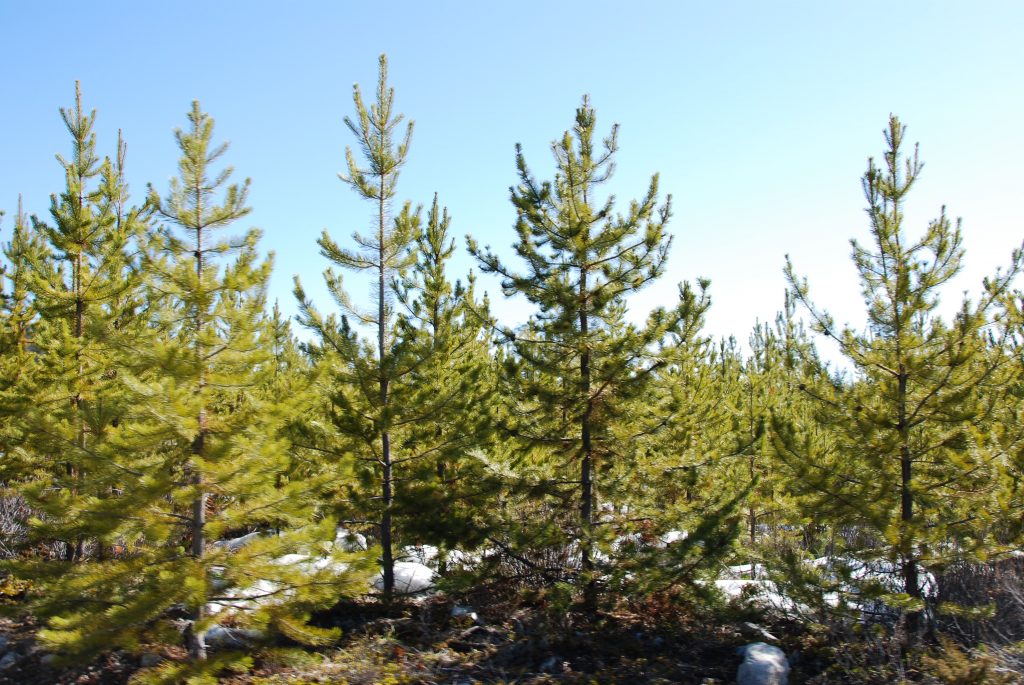
Features
Bioeconomy
Financial Reports & Markets
Forestry
Paper
Pulp
NRCan: Pulp and paper saw decline in 2019 as overall forest sector contracted
Natural Resources Canada's annual forests report for 2020 shows industry decline between 2018 and 2019
January 29, 2021 By Kristina Urquhart
 Photo: Annex Business Media
Photo: Annex Business Media Canada’s pulp and paper sector saw a 7.9 per cent drop in real GDP in 2019 as the overall forest sector contracted, says a new Natural Resources Canada (NRCan) report.
NRCan’s 2020 annual report covers the 2018-2019 period. Reported figures have yet to reflect the economic impact of COVID-19.
The 30th anniversary edition of the state-of-the-nation report is called “Canada’s forests: Adapting to change” and presents market data along with reflections on how the forest sector—which includes forestry and logging, pulp and paper manufacturing, and wood product manufacturing—continues to evolve.
“Adapting to change means finding innovative ways to use traditional waste products from sawmills and pulp mills,” says Seamus O’Regan, minister of natural resources, in the report’s introductory message. “In Quebec, for example, the Toundra greenhouse is using waste heat and carbon dioxide from a nearby pulp mill to grow tens of millions of cucumbers each year.”
Evolution for the industry is imperative, say the report authors, because major challenges remain for the forest sector, including climate change, increasing international competition, and the pandemic, with its impacts on safety, supply and demand. Globalization and the introduction of new diseases and insects to Canada’s forests continue to affect the quality and availability of the fibre supply available for pulp and paper and wood products.
Sector contracts in 2019
The report shows that in 2019, the real GDP of pulp and paper manufacturing dropped by 7.9 per cent from 2018 due to weak global demand and wood fibre supply challenges in Canada.
Demand for traditional paper products is expected to have fallen in 2020, while household paper and packaging are expected to have remained solid – even with uptake in consumer tissue throughout the pandemic.
In 2019, the forest sector contributed $23.7 billion to Canada’s nominal GDP, or 1.1 per cent. The forest sector contracted by seven per cent in 2019 while the overall economy grew by one per cent.
Operating profits in 2019 fell by 64.4 per cent over 2018, and return on capital employed dropped to 4.4 per cent from 11.5 per cent, ending seven years of growth.
Exports decline
Over two-thirds of Canadian forest products are exported. The United States accounted for about 68 per cent of Canada’s total forest product exports in 2019.
Halting six years of growth, total forest sector exports declined 13.8 per cent in 2019, to $33.2 billion, due to prices and reduced production.
At $1.7 billion, wood pulp exports held the second-largest decline in exports (after softwood lumber) because of lower pulp prices. NRCan expects the pandemic to have a negative impact on trade.
The overall forest sector was expected to grow in 2020, but the pandemic created uncertainty. Lumber demand has increased, but may be offset by the state of the North American and global economies after the pandemic.
Production drops
Wood pulp production decreased by 4.9 per cent between 2018 and 2019. Newsprint production fell 10.8 per cent, and printing and writing paper production dropped 14.6 per cent.
Some of the challenges in 2019 that led to this decline included fibre shortages in B.C., decreased demand for pulp, newsprint and printing and writing paper, and low commodity prices. Sawmill closures and curtailments caused there to be less available fibre for wood pulp.
Global demand for newsprint fell 13 per cent in 2019 over 2018, and demand for printing and writing paper fell six per cent.
In Canada, newsprint production has declined 70 per cent – from nine million tonnes in 1990 to 2.7 million tonnes in 2019 – because of increased international competition from low-cost producers and the increase of digital media.
Secondary paper product manufacturing (i.e., envelopes) fell by eight per cent in 2019 over 2018. In 2020, demand for some secondary paper products is expected to increase, like for paper medical supplies.
While the impact of pandemic on pulp and paper production remains uncertain, NRCan says it may speed the decline of newsprint and printing and writing paper.
Products diversify
Lower fibre supply, growing protectionism and the cyclical supply and demand of the market has led to increased diversification of high-value products, such as compostable bioplastics.
Advanced bio-based products are expected to make up 50 per cent of consumer products by 2050, so forest biomass used for biomaterials and biochemicals in the health care, pharmaceuticals, food and packaging industries are the way forward, the report says.
For example, the Toundra Greenhouse, adjacent to Resolute’s pulp mill in Saint-Félicien, Que., recently expanded its size to 19 hectares and uses heat residuals from the mill to help offset its heating requirements by 25 per cent.
Toundra also uses carbon capture to collect up to 30 tonnes of carbon dioxide per day from the pulp mill for controlled injection into the greenhouse to help with growing vegetables.
To read The State of Canada’s Forests – Annual Report 2020, click here.
Print this page